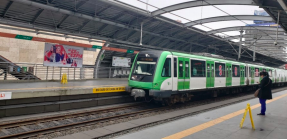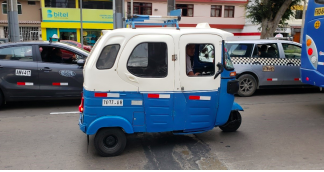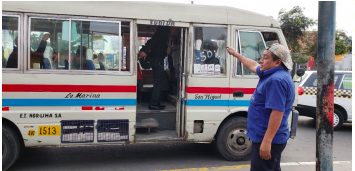Accessible Transit: Beyond Our Boarders
- Kristen Salkas, PhD
- Oct 6, 2020
- 2 min read
Updated: Jan 5, 2021
I’ve worked for many years with the Latinx community in Chicago. For seven years I worked as a travel trainer and mobility outreach professional, and for ten years I worked as a researcher with the Latinx disability community. Three times I’ve had the opportunity to travel abroad to Latin America and conduct research there with the disability community on transportation and community participation. Most recently, I traveled to Lima, Peru. While there are still many barriers to accessible transportation in the US, we can definitely “count our blessings” when comparing our transit to other countries.
During my time in Lima, I was able to use various forms of public transit. Lima offers many different types of public transit— combis, custers, corredores, microbuses, trains, and mototaxis—that work in different and not always complementary ways. In Latin America, “public” transit means it is available to the public, but almost all of the transportation is privatized. Only one type of bus service in Lima is supported by public funding.
Only two of Lima’s forms of public transit — the train and the corredor bus — are accessible to people who use mobility devices or people who are Deaf or blind. This means that many people with disabilities can’t even utilize them to get where they need to go. Instead, they rely on expensive taxis or have to purchase their own vehicles… which still isn’t that much faster! Traffic in Lima is the worst I’ve ever seen, and streets aren’t wide enough to accommodate all the vehicles. Let’s just say, I will no longer complain about getting stuck on the Kennedy during rush hour, or complain about the bus drivers here stopping fast for a quick red light.
More cars make it harder for public transit users to get to where they’re going, and it also makes it dangerous for pedestrians to travel. Street crossing and community safety skills are two skills we teach all the time in travel training here in the US, but it is even more vital to teach safety and street crossing in the hustle and bustle of Lima.
Unfortunately, there are no formal travel training programs in Lima. Instead, people are expected from a young age to learn the system with the help of their families. When I was doing research there, I asked families of kids with disabilities in Lima how they arrive to their day program each day. Given the complexities and inaccessibility of the public transit system, it’s not a surprise that most people got around by private transportation services — family vehicles, hired drivers, and ride share. Of course these services cost more money, but they are safer, accessible, and take a lot less time than navigating the transit system in Lima.
Will Lima ever be able to take advantage of travel training? With their piecemeal system, safety concerns, and inaccessible vehicles… I’m not sure. But it does make me feel grateful that despite the shortcomings of public transit in the US, we have a lot more affordable options available here.





















